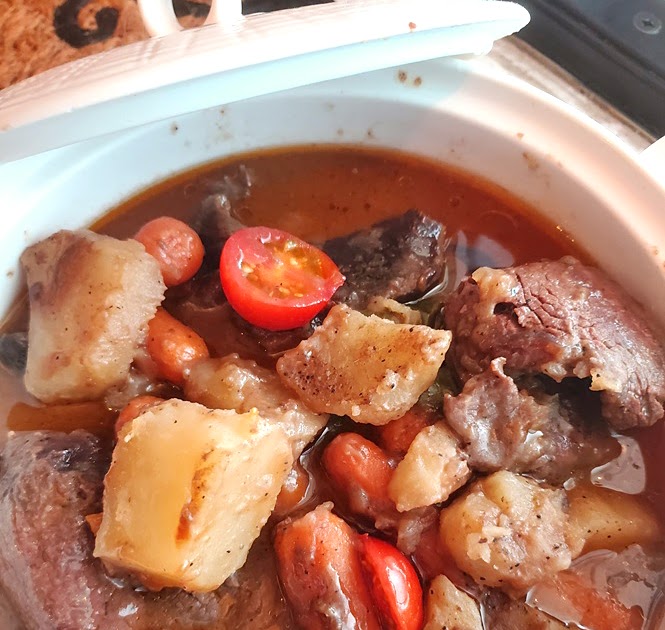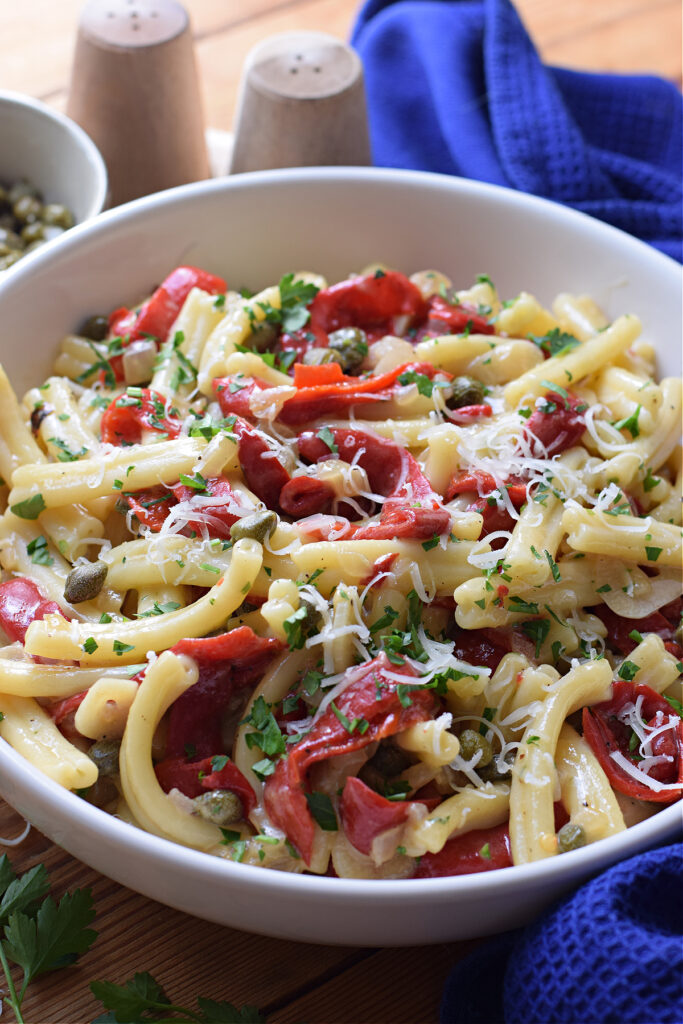Delicious Potato Gratin Savoyard – A Creamless Classic
Potato Gratin Savoyard is a delightful French dish made of thinly sliced scalloped potatoes, rich cheese, and savory stock. Unlike its creamy counterpart, Gratin Dauphinois, this version uses stock to create a dish that’s just as comforting but lighter. Enjoy the perfect combination of softly baked potatoes and a crispy cheesy topping!
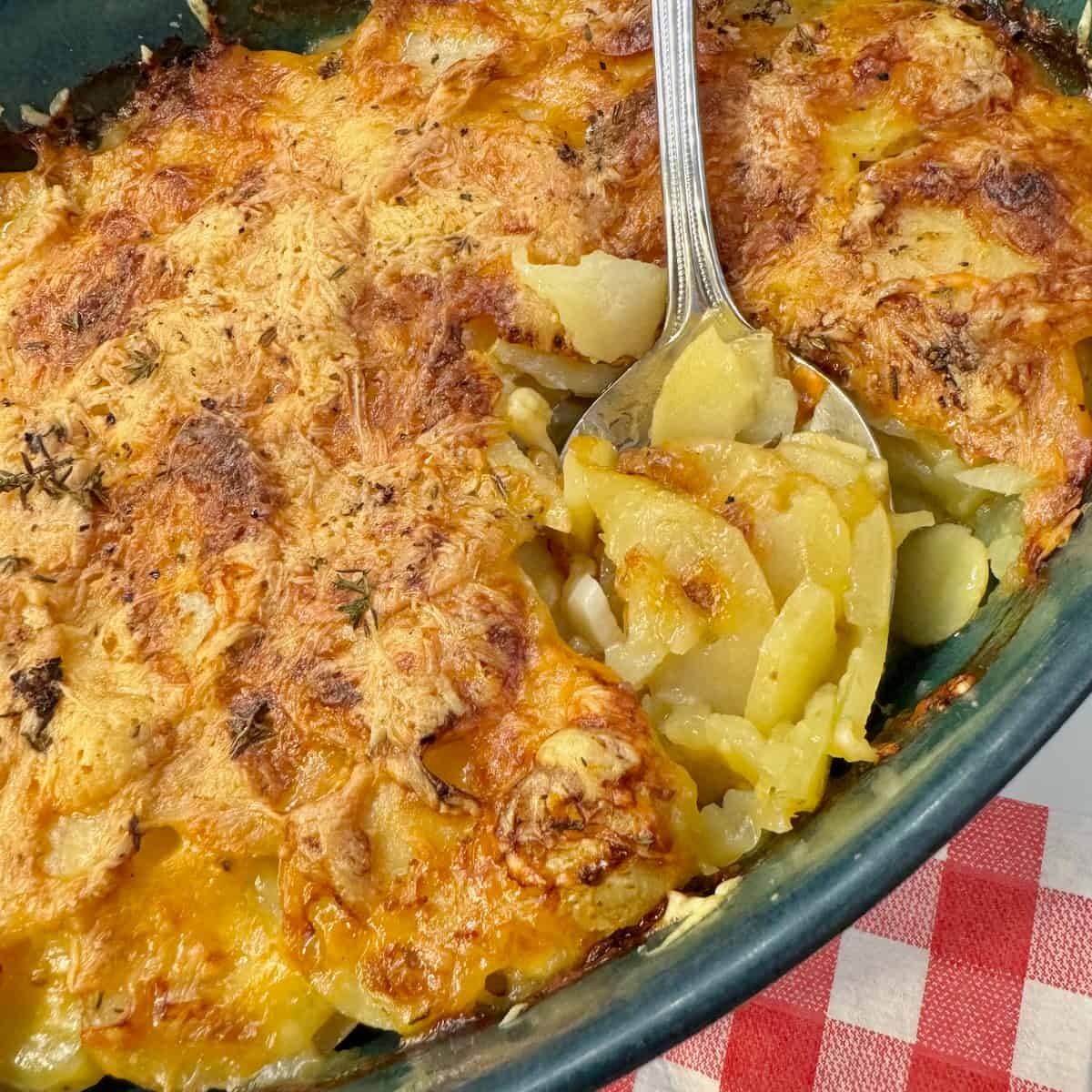
Savoyard Potato Gratin Without Cream
This family favorite recipe has been lovingly crafted over time, inspired by a cherished French cookbook from the Scotto sisters. It’s a simple yet satisfying dish that features layers of ultra-thin potato slices alternating with grated Emmental cheese. The magic happens when warm beef, chicken, or vegetable stock is poured over the layers before baking, allowing the gratin to self-cook in its juices while avoiding any worries about curdled cream or excess calories.
The essence of a gratin, according to Larousse Gastronomique, is that it is a family-style dish meant to be served straight from the oven so everyone can enjoy the moment of cutting into the golden, crispy top layer together. Imagine Auguste Escoffier presenting this dish to his loved ones; it’s pure culinary bliss.
Pommes de terre à la Savoyarde – prepare as for Gratin Dauphinois but swap milk for Consommé (beef/chicken stock).
Auguste Escoffier, Le Guide Culinaire (1903)
What Does Gratin Mean in French?
A Gratin (pronounced: ‘gra-tang‘) refers to the golden brown crust that develops on the surface of a dish heated in the oven, typically enhanced by a top layer of melted cheese or breadcrumbs.
Larousse Gastronomique
When the gratin arrives at the table, everyone eagerly anticipates that first scoop of the crunchy, golden layer of cheese. Even after the meal is done, there’s always a playful competition for the last delicious bits that cling to the dish, making it evident that Gratin comes from the French verb ‘gratter‘, meaning to scrape, reflecting those tasty morsels left at the bottom.
Is Au Gratin Potatoes and Savoyard Potato Gratin the Same as Dauphinois?
French cuisine features a range of potato gratins. While they all typically consist of layered, thinly sliced potatoes, each variation differs in the type of sauce used for moisture. Don’t get confused by the rich and creamy Gratin Dauphinois from the Dauphiné region, which is commonly known as Au Gratin potatoes.
The Gratin Savoyard, or Pommes de terre à la Savoyarde, stands out because it excludes cream or milk. Instead, it showcases cheese and stock. If you crave the creamier variant, you’re invited to try out the classic le Gratin Dauphinois, known for its richness.
What Kind of Potatoes are Best for Making a Gratin?
The choice of potatoes plays a crucial role in the outcome of your gratin. For the best results, opt for waxy potatoes, which hold their shape when cooked. Ideal varieties include Charlotte, Belle de Fontenay, Anya, Desiree, Russet, Yukon Gold, or even Jersey Royals, though the latter can be tricky to slice due to their smaller size.
Fortunately, there’s flexibility! Any potato can work well, even floury types like Maris Piper, but remember that waxy potatoes add the starch that helps thicken the stock naturally.
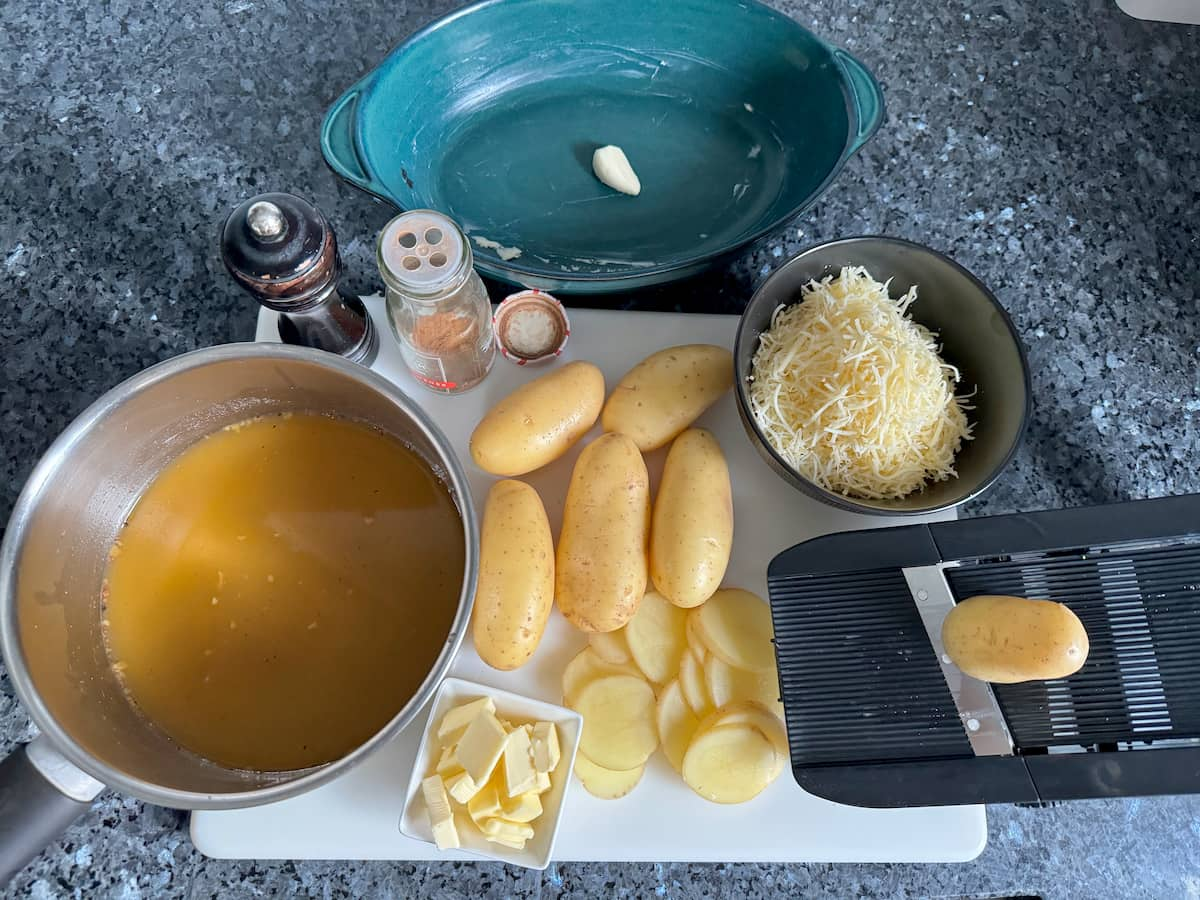
Tips for Making the Best Potato Gratin from Scratch
When slicing your potatoes, aim for thin, even pieces. This ensures uniform cooking and allows the flavors to meld together beautifully in the oven.
- For speed and uniformity, use a food processor with a slicer attachment. If you prefer working with a knife, ensure it’s sharp for easier slicing.
- If using a mandoline slicer, remember to use the safety guard! Slicing with a mandoline can lead to accidents if you’re not careful.
Enhance flavor with herbs: A teaspoon of fresh thyme or finely chopped rosemary added before baking can give your dish an extra layer of flavor. Alternatively, you can use fresh parsley or chives just before serving to preserve their brightness.
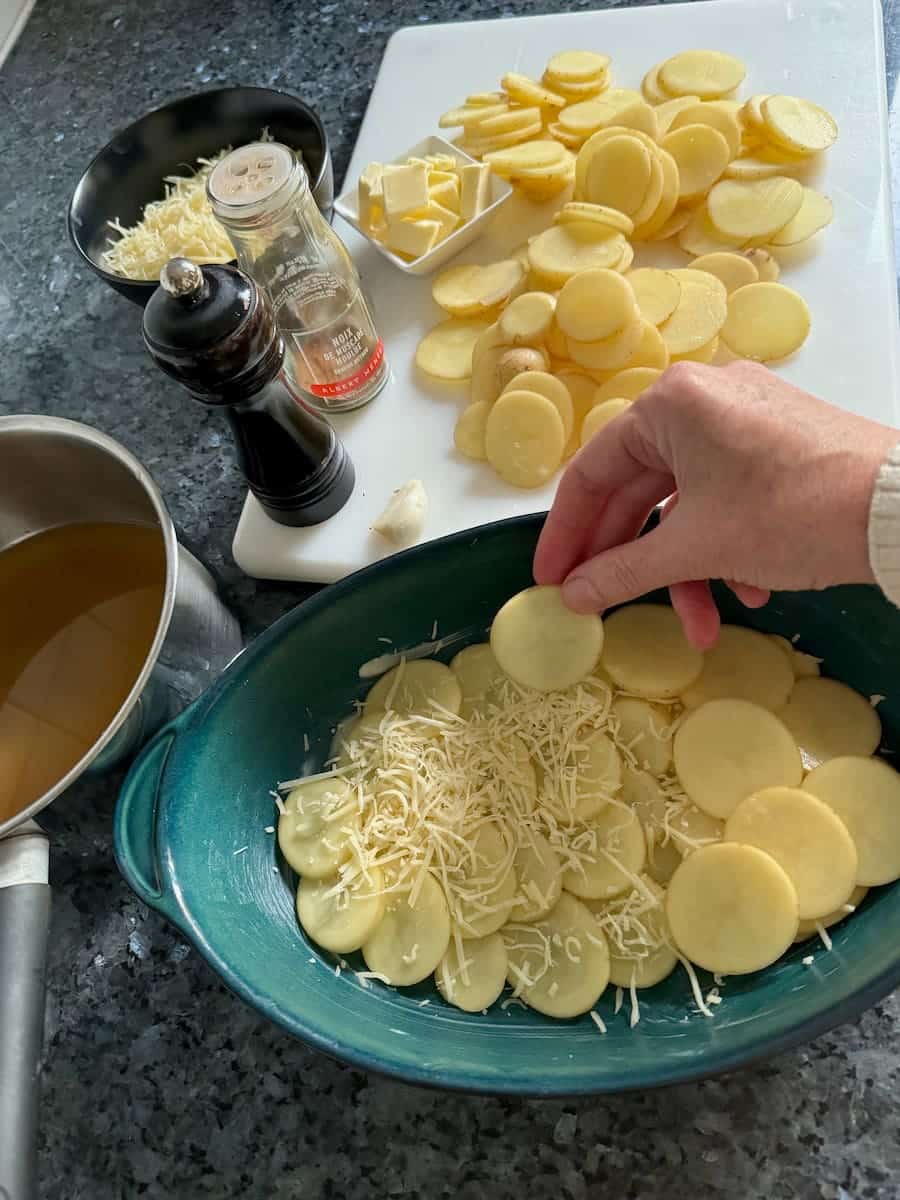
Can I Cut the Potatoes in Advance?
Unlike the creamy Dauphinois, it’s recommended to cut your potatoes closer to baking time for Gratin Savoyard. If you do need to prepare ahead, placing cut potatoes in water can prevent oxidation. However, this will wash off some of the starch, which helps thicken the sauce during baking.
What Cheese is Best for a Potato Gratin Savoyard?
For an authentic flavor, seek out French cheeses. Emmental is light and fruity, making it an excellent choice for this gratin. If you’re looking for something bolder, consider using Beaufort or a combination of both. Gruyère (Swiss) or its French equivalent, Comté from the Jura, is also a perfect match.
Can I Freeze Potato Gratin or Reheat it the Next Day?
This delightful dish is freezer-friendly! Simply cool the gratin, cover it well, and freeze it for up to a month. When you’re ready to enjoy it again, reheat thoroughly.
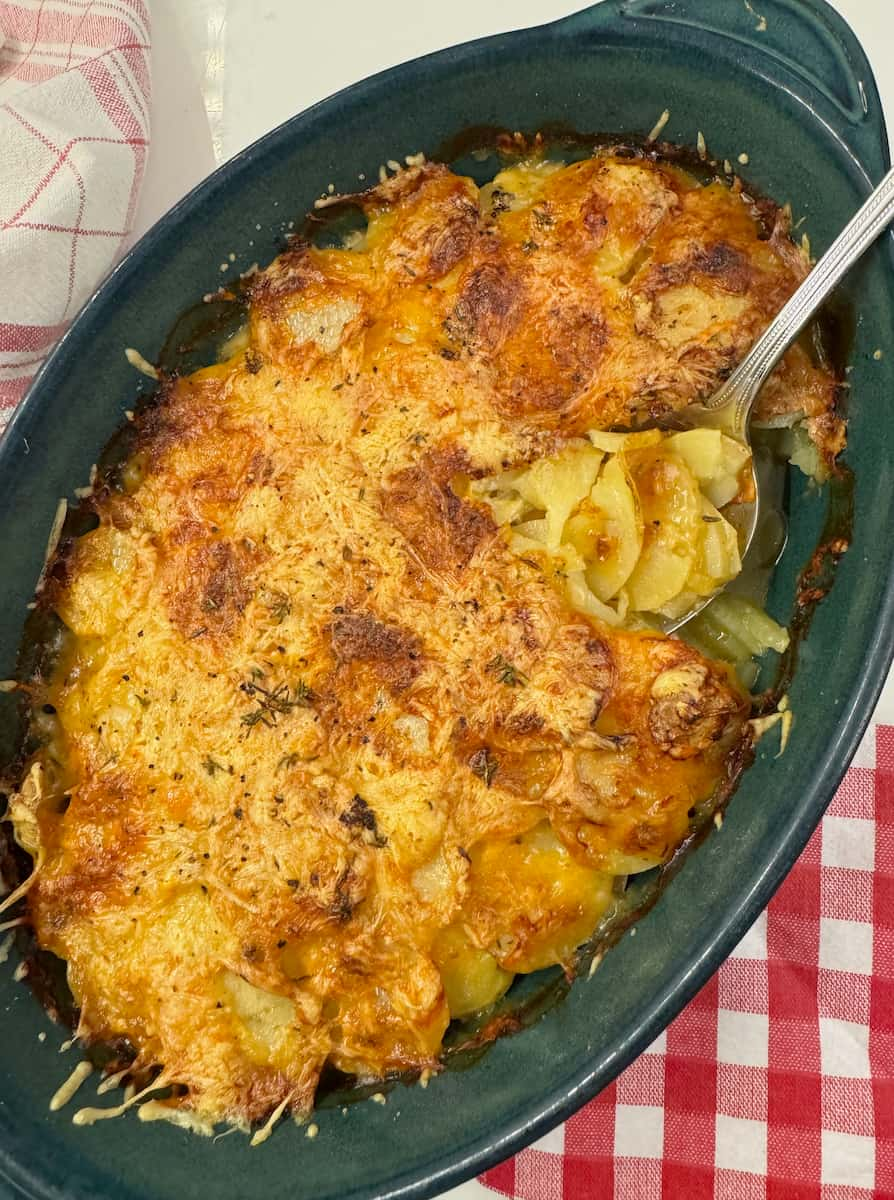
How to Serve
Serve your Potato Gratin Savoyard directly at the table, garnished with freshly chopped flat parsley or your herb of choice. This dish pairs wonderfully with poultry, meats, or even as a delightful accompaniment to pan-seared fish when using vegetable stock.
It’s superb alongside dishes like Coq au Vin, Corsican Veal Stew, or honey-glazed pork.
FAQs
1. Can I use different types of cheese?
Absolutely! While Emmental is a great choice, you can experiment with other cheeses like Gruyère, Beaufort, or even a mix of your favorites for different flavor profiles.
2. How do I store leftovers?
Leftover gratin can be stored in an airtight container in the refrigerator for up to three days. You can reheat it in the oven for the best results.
3. Can I add vegetables to the gratin?
Yes, vegetables like sautéed mushrooms or spinach can be great additions! Just make sure not to add too much moisture as it may affect the texture of the gratin.
4. What can I serve with Potato Gratin Savoyard?
This dish is an excellent side for meats like roast chicken, beef, or pork. For a lighter option, it pairs beautifully with seared fish.
5. Is there a gluten-free version of this recipe?
Yes, this recipe is naturally gluten-free since it does not require any flour. Just ensure that your stock is also gluten-free.

